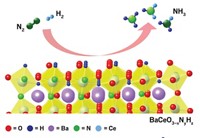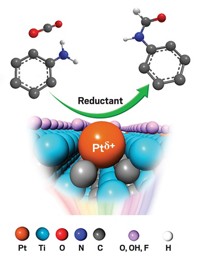Advertisement
Grab your lab coat. Let's get started
Welcome!
Welcome!
Create an account below to get 6 C&EN articles per month, receive newsletters and more - all free.
It seems this is your first time logging in online. Please enter the following information to continue.
As an ACS member you automatically get access to this site. All we need is few more details to create your reading experience.
Not you? Sign in with a different account.
Not you? Sign in with a different account.
ERROR 1
ERROR 1
ERROR 2
ERROR 2
ERROR 2
ERROR 2
ERROR 2
Password and Confirm password must match.
If you have an ACS member number, please enter it here so we can link this account to your membership. (optional)
ERROR 2
ACS values your privacy. By submitting your information, you are gaining access to C&EN and subscribing to our weekly newsletter. We use the information you provide to make your reading experience better, and we will never sell your data to third party members.
Materials
Boosting Copper’s Catalytic Conversion
Oxidizing then reducing the metal enhances its ability to convert CO to liquid fuels
by Mitch Jacoby
April 14, 2014
| A version of this story appeared in
Volume 92, Issue 15

With relatively little effort, copper, a low-cost and plentiful element, can be converted from a mediocre catalyst for converting CO2 to liquid fuels to a good one. Several metals can be used as electrocatalysts for converting CO2 to CO. But few of them do a good job transforming CO to fuel-worthy liquids. In an electrochemical cell, copper electrodes can mediate that conversion step, but the chemical selectivity and energy efficiency are too low for practical use. Stanford University’s Christina W. Li and Matthew W. Kanan show that copper can do a better job at CO conversion if the metal is first oxidized in air to form a Cu2O layer and then reduced either electrochemically or by treatment with hydrogen. Specifically, the team shows that compared with a nanocrystalline copper reference electrode, Cu2O-derived materials of comparable particle size produce ethanol more selectively and with lower energy input (Nature 2014, DOI: 10.1038/nature13249). The team proposes that the enhanced performance stems from unique properties of the grain boundaries (interfaces) between nanoparticles of the Cu2O-derived materials.




Join the conversation
Contact the reporter
Submit a Letter to the Editor for publication
Engage with us on Twitter